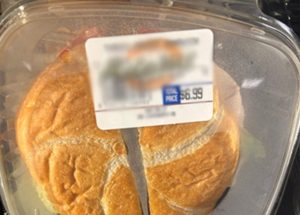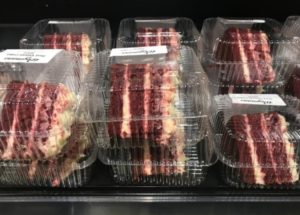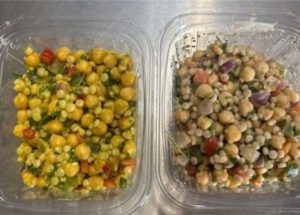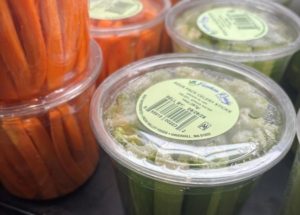Aug 11, 2025
PET and The Battle of Bioplastics Part I: PLA
At a Glance PLA and PET go head-to-head — PET wins on cost, clarity, and recycling; PLA is plant-based but limited. PET leads with strong barriers, low cost, and solid infrastructure. PLA struggles with heat, moisture, and composting challenges. Smart brands mix and match — PET for most, PLA where it fits. “Ding, ding, ding! […]
Read More +
Aug 06, 2025
The Sustainability Dilemma That’s Keeping Food Industry Leaders Up at Night
At a Glance Sustainable packaging terms are often misused, and each one requires different disposal systems. Infrastructure is the real barrier, not the materials themselves. Bio-based doesn’t mean biodegradable — and many don’t break down at all. No one-size-fits-all — your best option depends on product needs and local systems. You’re standing in your office, […]
Read More +
Aug 04, 2025
How Organoleptic Testing Prevents Costly Product Failures and Extends Shelf Life
At a Glance Organoleptic testing bridges lab data and real-world customer experience. It evaluates how food looks, smells, tastes, and feels — the factors that truly drive repeat purchases and brand trust. Traditional shelf-life testing isn’t enough. Even with perfect gas composition or microbial control, customers will reject products that seem “off” before their expiration […]
Read More +
Jul 30, 2025
The Easy Way to Eliminate Condensation in Cold Food Packaging
At a Glance Condensation in food packaging makes fresh food look soggy and unappetizing, leading to lost sales and frustrated customers. It forms when warm food is sealed in cool containers — moisture builds up and drips onto the product, damaging appearance and quality. Condensation drives up waste, damages brand perception, and can trigger food […]
Read More +
Jul 28, 2025
Where is OPS Today, and Have Food Industry Pros Abandoned It?
At a Glance OPS packaging is disappearing from shelves due to limited recyclability, heat sensitivity, and shrinking supply — despite its clarity and low cost. PET took the lead with better durability, barrier properties, and widespread recyclability, making it the go-to for modern food packaging. Sustainability matters: OPS (#6) has little recycling support, while PET […]
Read More +
Jul 23, 2025
The Hidden Cost of Lost Days: Why Shelf-Life Extension is an Investment, Not an Expense
At a Glance Shelf-life extension is a profit lever — even one extra day reduces waste, saves labor, and protects margins across your operation. Oxygen, temperature swings, and poor packaging are silent killers of freshness — and they quietly drive up costs you can’t afford to ignore. Smart operators shift their mindset — the question […]
Read More +
Jul 21, 2025
Does My Plastic Food Packaging Contain Phthalates?
At a Glance PET, HDPE, and PP plastics are phthalate-free and safe for food use. Phthalates are used in flexible PVC, not rigid food containers. FDA regulations and supplier documents help confirm packaging safety. Stick with proven materials and trusted suppliers to avoid phthalate concerns. You’re running a successful food business that focuses on delivering […]
Read More +
Jul 18, 2025
How UV Light Affects Fresh Food in Packaging
At a Glance UV light exposure can damage food quality, causing oxidation, nutrient loss, color fading, and flavor changes. UV-blocking films and coatings protect freshness and extend shelf life. Materials like PET offer partial protection, but additives improve UV defense. Choosing the right barrier means balancing protection, clarity, recyclability, and compliance. You just got a […]
Read More +
Jul 16, 2025
Are Shrink Bands ‘Shrinking Away’ or ‘Here to Stay’?
At a Glance Shrink bands offer solid tamper protection, but come with labor, equipment, and sustainability costs. Use is declining as brands seek easier, greener, and more cost-effective alternatives. Supplier options are shrinking, making shrink bands harder and more expensive to source. C-wraps, labels, and built-in seals are rising as viable tamper-evident replacements. Let’s set […]
Read More +
Jul 14, 2025
Why You Need to Understand the Carbon Footprint of Plastic Food Packaging
At a Glance The carbon footprint of plastic covers its full life cycle, from production to disposal. PP and PE emit less CO₂e than PET; bioplastics aren’t always greener. Plastic often beats glass and paper in carbon impact due to light weight. Scope 3 emissions are big — better recycling helps reduce them. Imagine holding […]
Read More +










